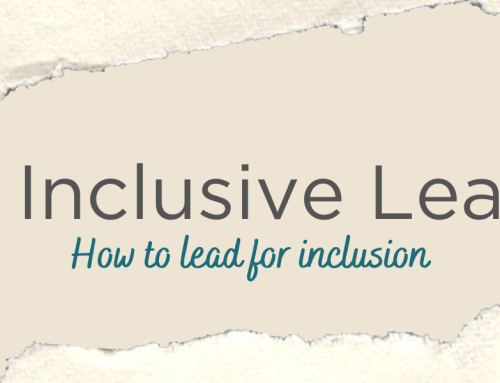This was originally published on SmallVille.com.au and is just as relevant today as we recognise the value of having difficult conversations.

Is your “too hard basket” full of conversations you’ve been avoiding? Instead of facing up to the challenge, we equate confrontation with conflict and the issue festers. This can make things far worse than if we just got a little courageous.
Here are three examples of situations I’ve been in and tools I use my self and with my clients to help them stay out of the too hard basket and get comfortable having difficult conversations.
SCENARIO ONE
I was with my accountant at a cafe where I know the owner. The cafe owner had a question about the option to put a vehicle in the business’s name or your own name and claim travel expenses. My accountant said it was a lot easier to do the later, my cafe owner friend spent a fair bit of time talking about how much the vehicle would get used for business, effectively justifying the decision he’d made as if my accountant was the ATO.
Tool One: Pause Button
This conversation could have used the “Pause Button” as a way to prevent time wasted and set a boundary for what was appropriate and name the incorrect assumptions being made.
Using the “Pause Button” might sound like:
I’m going to pause you there, I think you’re assuming…which is understandable, but actually…
With respect, let me pause it there, it seems we’re going on a track about… when what this is about/what’s important here is…
SCENARIO TWO
Dealing with a customer who insists you’ve done something wrong that you believe you haven’t. The air is tense and though you’re trying to maintain your composure you’re getting angry and you know this could get ugly if you keep going but you know you’re right. Despite your training that the customer is always right, this feels like an exception and you feel it’s important to educate them and make them understand.
- Tool Two: Right or Happy?
- The question to ask yourself in a situation like this is, “Would you rather be right or happy?”
- If you let go of being right, and withdraw from the conversation, removing the fuel from the fire. You may be concerned that they will give you a bad review but if they are unmovable in their position, it’s likely to get worse if you pursue it.
- When you withdraw the ire, and make space for a different outcome, you have the chance to turn things around. They may well walk off in a huff, they may well tweet about it, but they may also shift their perspective. Once there’s nothing to push up against, they may well chill out a bit. From there you have some options:
- You can apologise, even if you believe you’re right, for letting it escalate, for bringing heat to the fire. “I’m sorry, I didn’t mean to raise my voice.” or “I apologise, I let that go in a direction I didn’t intend.”
- Say something about how important their business/relationship is to you,
- Offer something to soften the exchange. ‘Wow, that got a bit heated, let’s take a step back.”
The minute you take responsibility or shift into a more vulnerable gear, it invites them to do the same. This works only if you are sincere about it. If you are fixed on a particular outcome, they can smell it, and are likely to stay pissed off. When you take responsibility for changing the tone, and get humble about it, you’ll be amazed at how quickly things change. So ask yourself: “Would you rather be right or happy?”
SCENARIO THREE
You’re with a client who has a particular goal that you’re supporting them to achieve. They have cancelled the last two appointments and they’ve rung you to let you know they would like to withdraw from your program. Do you just let them go? Are you concerned about the money? Will they ask for a refund? Will it damage your reputation? Or you could remind them what they wanted to get out of the program in the first place.
- Tool Three: Get Yourself Out of the Way
- Turn this around by putting your concerns aside and get back to who they are, what they are capable of despite their concerns. This is your client, they pay you to help them. This is the same for managing your team, working with your staff to achieve goals for their development or specific business outcomes.
- Eyes on the prize: remind them about their goal and your faith in their ability, even when they falter, help them see the bigger picture, bigger than their fears and foibles.
- Engage the heart: Ask them about what it would feel like to achieve the goal, complete the project, get to the finish line. This moves them out of the concern and back to what’s possible.
- Find the source of the concern: They may feel confronted, and uncertain of their ability to succeed. Give them space to get it off their chest. Acknowledge their experience and normalise it, we all have moments of doubt.
- Reassure them: Remind them that they are capable, and demonstrate your faith in them.
- I remind my clients that they are more powerful than they realise and provide a reflection of someone who believes in them. When the goal or vision is brought to mind, such as fitting into a wedding dress for a personal training client, launching a product for a start up, or writing copy for an ‘about page’ if you’re a web developer, the people we work with get confronted. It’s part of being human. Imagine if you just let it go and gave in to their concerns.
If we don’t have the courageous conversations, we can go on as normal but what’s happening beneath the surface can start to fester. Our clients will believe their own stories about their limited ability, our teams will wallow in mediocrity and we forgo our own leadership. When we set boundaries, choose happiness over rightness and make way for our clients and staff to shine, great things happen.
To find out more about our skills-building workshop on Difficult Conversations, contact Tathra.















Leave A Comment